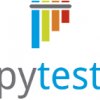Tools
Articles
 |
Inverting the Test Automation Pyramid A growing company was tasked to develop a test automation program from scratch, change its coding practices, and build a continuous testing toolchain. Martin Ivison details how they did it, including realizing that implementing the traditional test pyramid wasn't going to work—it would have to be turned upside down. They found out that small is beautiful, cheap is good, and cultural change matters. |
|
|
|
Brew vs. Pip: Which Package Installer Should You Use? A command-line package installer is a handy tool that installs your desired software package without a fancy UI, yet it often proves to be more effective than some tools integrated into expensive IDEs. Brew and Pip are two of the more popular options for package installers when using the script language Python. But what’s the difference between them, and which makes more sense for your use? Here’s an introduction to Brew and Pip for testers. |
|
 |
Why You Shouldn't Use Cucumber for API Testing Many people misunderstand the purpose of Cucumber. Because it seems to yield clearer, plain-language test scripts, testers want to use Cucumber as a general-purpose testing tool, including for API tests. But its true purpose is as a BDD framework. You may be thinking, what’s the harm? Here’s why it makes a difference—and why you should choose another tool for API testing. |
|
 |
Lessons Learned Switching Manual Tests to Pytest If you want to start automating your test cases, László Szegedi makes an argument for using the popular Python and Selenium combination. Here, he gives a test script you can use after every release to find any serious regression bugs in the system, to be executed automatically. Integrate it with your existing development pipeline and you get a pretty useful tool for continuous improvement. |
|
 |
A Beginner's Guide to Test Automation If you’re new to automated testing, you’re probably starting off with a lot of questions: How do I know which tests to automate? Why is automated testing useful for me and my team? How do I choose a tool or framework? This article answers a lot of those questions—and gives you some more to consider!—so you have an excellent foundation for beginning your automation endeavors. |
|
 |
Test Tooling Patterns for Solving Problems A design pattern consists of the pattern name, the problem it solves, how to implement the solution, and some consequences. There are also proven patterns like this that can be used in testing. This article lists and defines many commonly used patterns that can help you solve problems, improve code maintenance, and just make your life easier. |
|
 |
The TERMS for Test Automation Risk or Success Automation is a service to testing—a tool that may prove to be useful or turn wasteful. When approaching test automation, there are five main areas to focus on, expressed in the acronym TERMS: Tools and Technology, Execution, Requirements, Maintenance, and Security. Here are some examples of how these factors are involved in defining automation success or failures. |
|
 |
When a Number Is Not a Number: Benefits of Random Test Generators We like to hope that we will consider all possible situations when devising our tests, but it’s all too easy to overlook the unusual cases. That’s the benefit of random test generators. We might feel comfortable after testing a few dozen test cases; these tools generate hundreds. With more stuff getting tossed at the wall, there is a greater likelihood that something interesting sticks. |
|
 |
Leveraging Machine Learning to Predict Test Coverage Test coverage is an important metric within test management, and as technology evolves, we‘re able to leverage new trends to predict coverage. Weka, an open source suite of machine learning software, can take your test management beyond spreadsheets to the latest AI technologies, letting you predict your test coverage earlier with greater accuracy. |
|
 |
Using Decision Tables for Clear, Well-Designed Testing Decision tables are used to test the interactions between combinations of conditions. They provide a clear method to verify testing of all pertinent combinations to ensure that all possible conditions, relationships, and constraints are handled by the software under test. If you need to make sure your test cases cover all outcomes in a scenario, read on to learn how to use decision tables. |











